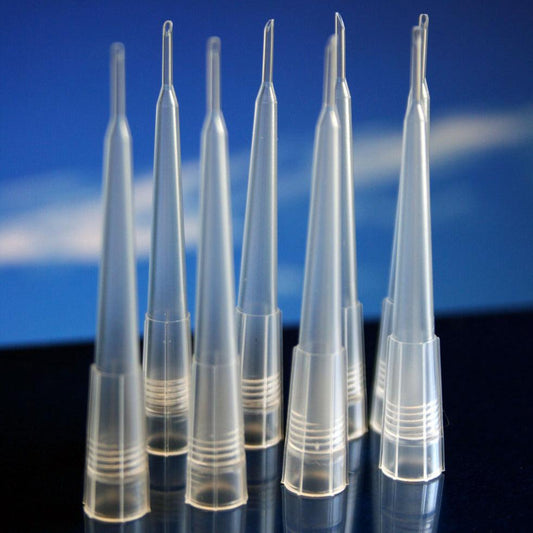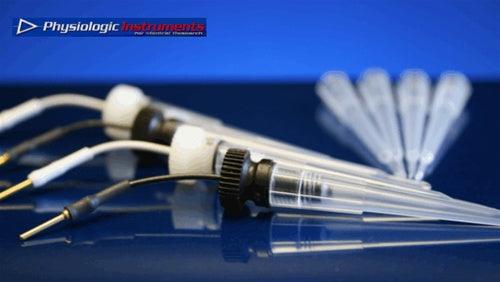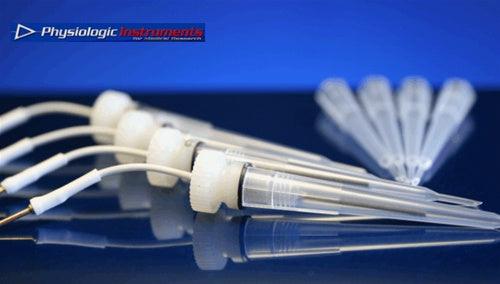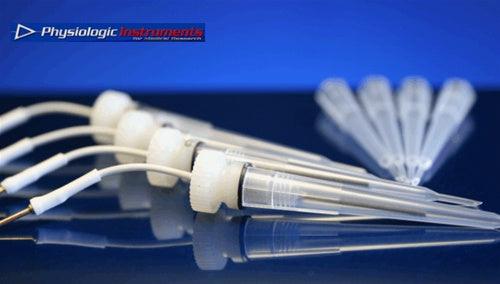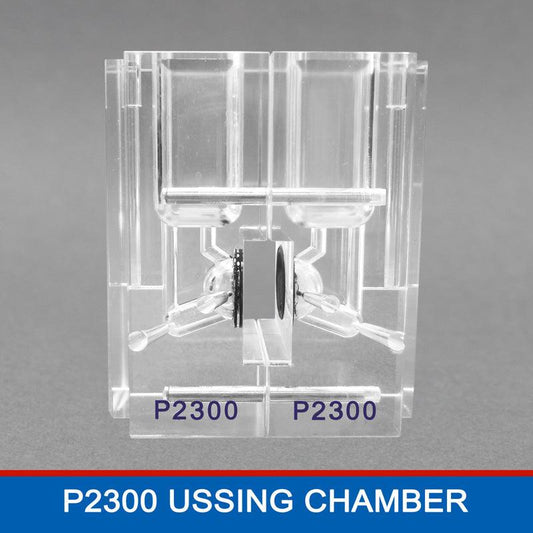Complete Ussing Chamber Guide: Protocols, TEER, and Troubleshooting
Short version: This Ussing Chamber guide shows how to measure PD, Isc, and TEER, run flux assays, choose hardware, prep solutions, and troubleshoot fast—whether you’re working with native tissue or monolayers.
Last updated: August 12, 2025
1) What an Ussing Chamber Measures & Why
Goal. Quantify transepithelial transport and barrier integrity across a tissue or monolayer separating apical and basolateral solutions.
Primary electrical readouts
-
PD (Potential Difference, mV): open-circuit voltage across the epithelium.
-
Isc (Short-Circuit Current, µA/cm²): net active ion transport when PD is clamped to 0 mV.
-
TER / TEER (Ω, Ω·cm²): barrier tightness; higher values = tighter junctions.
-
TEER is area-normalized:
TEER = (Rsample − Rblank) × Area
-
Flux readouts (chemical)
-
Paracellular tracer flux (e.g., mannitol, FITC-dextran): tight-junction permeability.
-
Transcellular flux (e.g., glucose, amino acids): transporter-mediated uptake.
-
Apparent permeability (Papp) for a solute:
Papp = (dQ/dt) / (A × C0)
Why this matters. These metrics underpin research in CFTR/ENaC physiology, IBD, celiac disease, diarrhea models, airway hydration, skin barrier, and drug absorption/toxicity.
2) The Physics: Making Sense of PD, Isc, and TEER
-
Ohm’s Law (tissue):
V = I × R.When voltage-clamped to 0 mV, the injected Isc equals net electrogenic transport (e.g., CFTR-mediated Cl⁻ secretion minus ENaC Na⁺ absorption).
-
Series resistances (solution + electrodes + bridges) sit outside the tissue. Good chamber design places voltage-sensing electrodes close to the tissue to minimize series drop.
-
AC vs DC TEER.
-
DC pulse/step: inject a small current briefly; compute ΔV/ΔI.
-
AC impedance: a small sinusoid (e.g., 1 kHz) can isolate epithelial resistance and capacitance if supported by the electronics.
-
Corrections to apply
-
Liquid junction potentials (LJP): match ionic strength; use KCl agar bridges.
-
Offset correction: short the sensing electrodes in symmetric solutions; set baseline PD ≈ 0 mV before mounting tissue.
-
Area normalization: always report µA/cm² (Isc) and Ω·cm² (TEER) using the true aperture area.
3) Ussing Chamber Hardware: What Each Component Does
Chambers and Sliders (Apertures)
- Classic split-halves: maximal flexibility; more handling skill required.
- EasyMount: guided, fast, repeatable mounting; reduces tissue damage and variability.
- Aperture determines sensitivity and normalization (common: 0.071–0.64 cm²).
- Gaskets (thickness, compliance) control compression; over-tightening causes edge leaks or ischemia.

Electrodes & Bridges
- Ag/AgCl electrodes via agar–KCl bridges (e.g., 3 M KCl in 2–3% agar).
- Keep sensing electrodes close to tissue; current electrodes further out.
- Maintenance: re-chloride Ag wires periodically; replace cloudy or dehydrated bridges.
Perfusion, Gas, Temperature
- Gas lift with 95% O₂ / 5% CO₂ (carbogen) for bicarbonate buffers; gentle bubbling reduces unstirred layers.
- Perfusion (constant or interval) prevents depletion/accumulation; maintains set drug concentrations.
- Temperature: 37 °C with in-block or in-line heaters and calibrated probes; even 1–2 °C drift changes Isc/TEER.
Clamps and DAQ
- Voltage–current clamps (single/multi-channel) measure PD, inject current, calculate Isc/TEER automatically.
- Data acquisition: time-stamped events, protocol steps, and annotations improve reproducibility.
Looking for systems? See Ussing Chamber Systems and the Ussing Chamber Protocol.
4) Ussing Chamber Solutions & Recipes (working examples)
Verify with your IACUC/IRB/SOP. Buffer chemistry affects LJPs, transport driving forces, and viability.
Krebs–Ringer Bicarbonate (typical)
- NaCl 117 mM, KCl 4.7 mM, CaCl₂ 2.5 mM, MgSO₄ 1.2 mM, KH₂PO₄ 1.2 mM, NaHCO₃ 25 mM, Glucose 10 mM
- Gas with 95% O₂ / 5% CO₂, 37 °C
Mannitol/Glucose Osmotic Pair (symmetric osmolality)
- Serosal: glucose 10 mM; apical: mannitol 10 mM (or vice versa) to isolate transport asymmetries.
Common modulators
- Amiloride (apical) → ENaC block (↓ Na⁺ absorption)
- Forskolin/IBMX → ↑ cAMP → ↑ CFTR-mediated Cl⁻ secretion
- Bumetanide (basolateral) → NKCC1 block (limits Cl⁻ loading → ↓ secretion)
- CFTRinh-172 → inhibits CFTR currents
Tracer examples for flux
- Paracellular: mannitol, FITC-dextran (3–4 kDa)
- Transcellular: radiolabeled glucose, amino acids (observe safety protocols)
5) Ussing Chamber Protocol: Step-by-step SOP (field-tested)
A. Pre-run checks (10–20 min)
- Electrode offset: immerse both sensing tips in the same buffer; adjust PD ≈ 0 mV.
- Bridge health: gentle suction → free flow; no bubbles.
- Temperature: stabilize chambers at 37 °C (±0.2 °C).
- Solutions: pre-warm and gas; verify pH (7.3–7.4) and osmolality (±5 mOsm).
- Blank TER: assemble with a gasket/no tissue if SOP calls for Rblank.
B. Tissue/Insert prep
- Native tissue: dissect carefully; open along mesenteric border; trim to aperture.
- Monolayers (e.g., Transwell): rinse, equilibrate 15–30 min; use adapter sliders if needed.
C. Mounting (2–5 min with EasyMount)
- Align tissue (mucosa → apical, serosa → basolateral).
- Compress to seal—no wrinkles or edge extrusion.
- Start perfusion/gas; wait 10–20 min for baseline stabilization.
D. Baseline acquisition
- Record PD, Isc at steady state (drift < 1%/min).
- Measure TER via ΔI or AC routine; compute TEER.
E. Interventions (examples)
- Amiloride (apical) → ↓ Isc (blocks ENaC)
- Forskolin/IBMX (bilateral or basolateral) → ↑ Isc (activates CFTR)
- Bumetanide (basolateral) → ↓ secretory current (blocks NKCC1)
- Test compounds apical/serosal; track PD/Isc over time; collect samples for flux.
F. Flux sampling
- Define intervals (e.g., every 10–15 min); maintain sink conditions (receiver < 10% of donor concentration).
- Calculate Papp and clearance; normalize to area and time.
G. Close-out & QC
- Recheck offset and blank to confirm stability.
- Log temperature/pH deviations; inspect tissue for edge damage.
6) Ussing Chamber Data Analysis, Normalization & Reporting
Normalization
- Isc to µA/cm²: divide by aperture area.
-
TEER to Ω·cm²:
(Rsample − Rblank) × Area - Report means ± SEM, n animals, n tissues/animal; avoid pseudo-replication.
Typical plots
- Time course of Isc with annotated additions.
- TEER trajectory pre- and post-treatment.
- Flux vs time; bar charts of Papp.
Stats
- Paired analysis when the same tissue serves as its own control.
- Mixed models for multi-animal, multi-tissue designs.
- Pre-define exclusion criteria (leaks, unstable baselines).
7) Ussing Chamber Troubleshooting (fast diagnostics)
| Symptom | Likely Cause | Fix |
|---|---|---|
| Large PD drift | Electrode offset, LJP changes, temp drift | Re-zero in symmetric buffer; verify 37 °C; match buffer composition |
| Noisy Isc | Bubbles at tissue, poor ground, vibration | Degas solutions; remove bubbles; secure cables; isolate pump |
| Low/unstable TEER | Edge leak, over-compression, tissue damage | Remount with fresh gasket; reduce clamp force; trim cleaner edge |
| Isc saturates / can’t clamp | Bridge blockage, current electrode polarization | Replace bridges; clean current electrodes; check clamp compliance |
| Zero response to agonists | Poor viability, wrong side, expired reagents | Confirm viability; verify side; prepare fresh drugs |
8) Experimental Design by Tissue Type (Ussing Chamber)
Intestine/Colon
- Consider indomethacin pre-incubation if prostaglandins confound responses.
- Gentle mucosal cleaning; avoid epithelial tears.
Airway (trachea/bronchus)
- ENaC block with amiloride (apical); CFTR activation with forskolin/IBMX; observe bumetanide sensitivity.
Skin
- Thicker, higher TEER; ensure robust sealing; allow longer equilibration.
Cultured Monolayers (e.g., Caco-2, primary airway)
- Verify confluence/TEER thresholds; mind filter support resistance (subtract blank); use adapter sliders.
9) Quality & Reproducibility Checklist
- Chamber model, aperture, gasket lot recorded
- Temperature/pH logs within range
- Electrode offset before/after
- Baseline stability (<1%/min drift)
- Correct side additions and timestamps
- Area normalization documented
- Exclusion criteria predefined and applied
- Raw files archived (time series + event log)
10) Safety & Compliance
- Radiotracers: licensing, shielding, wipe tests, segregated waste.
- Human/animal tissues: IRB/IACUC approvals, appropriate biosafety precautions.
- Chemical hazards: bumetanide, forskolin, DMSO controls; maintain SDS access.
11) Selecting & Budgeting the Right Ussing Chamber System
Match to goals
- Teaching / pilot work: single channel, manual clamp, basic perfusion.
- Core lab / pharma: multi-channel (4–8+), automated routines, integrated DAQ.
- Barrier screening: stable TEER measurement with rapid mounting (EasyMount), reliable perfusion & temperature control.
Cost expectations (configuration-dependent)
Cost expectations vary depending on several factors (number of channels and chamber set-ups). We configure systems by tissue, aperture, and throughput.
12) Ussing Chamber Appendices
A) Quick-start SOP (one page)
- Warm/gas buffers; set 37 °C.
- Zero electrodes in symmetric buffer.
- Mount tissue (no wrinkles, correct orientation).
- Stabilize; record baseline PD/Isc; measure TER → TEER.
- Add modulators (amiloride → forskolin/IBMX → bumetanide, etc.).
- Collect flux samples on schedule; keep sink conditions.
- Close-out: re-check offsets; document exclusions.
B) Common Calculations
-
Isc density:
Isc (µA/cm²) = Iraw (µA) / Area (cm²) -
TEER:
TEER (Ω·cm²) = (Rsample − Rblank) × Area -
Papp:
Papp = (ΔQ/Δt) / (A × C0) -
Conductance:
Gt = 1 / R(normalize to area as needed)
C) Reporting Template (copy/paste)
- Tissue: species/region; monolayer line & passage
- Chamber: model, aperture (cm²), gasket thickness
- Solutions: compositions, pH, temperature; gas mix
- Clamp: model, sampling rate, TEER method (DC/AC)
- Baseline PD/Isc/TEER ± SEM (n animals, n tissues/animal)
- Agonists/antagonists: side, concentration, vehicle control
- Flux: tracer, sampling schedule, Papp calculation
- Statistics: tests, α level, exclusion criteria
13) Ussing Chamber FAQs
FAQs
What does an Ussing Chamber measure?
Primary electrical readouts are PD (mV, open-circuit potential), Isc (µA/cm², short-circuit current with PD clamped to 0 mV), and TEER (Ω·cm², barrier tightness). Tracer flux assays quantify paracellular/transcellular permeability.
PD, Isc, TEER — what’s the difference?
PD: voltage across the epithelium at open circuit.
Isc: net electrogenic transport when clamped to 0 mV.
TEER: area-normalized resistance = (Rsample − Rblank) × Area.
How do I compute TEER correctly?
Measure a blank (gasket/no tissue or insert-only), then compute TEER (Ω·cm²) = (Rsample − Rblank) × Area. Area-normalize, re-zero offsets in symmetric buffer, and match ionic strength to limit LJPs.
How do I normalize Isc?
Isc density (µA/cm²) = Iraw (µA) ÷ aperture area (cm²).
TER vs TEER — which should I report?
TER is raw resistance (Ω). TEER is area-normalized (Ω·cm²) and comparable across apertures. Report TEER for publications and cross-aperture comparisons.
DC vs AC TEER — what’s the difference?
DC injects a small pulse/step and computes ΔV/ΔI. AC impedance uses a small sinusoid (e.g., ~1 kHz) to separate epithelial resistance and capacitance if supported by your electronics.
How long should equilibration take after mounting?
Typically 10–20 minutes with perfusion/gassing and temperature stabilized at 37 °C (±0.2 °C). Wait for stable baselines (drift < 1%/min).
Do I need to subtract filter/insert resistance for monolayers?
Yes. Measure Rblank using the same insert without cells and use TEER = (Rsample − Rblank) × Area.
Which aperture should I use?
Smaller apertures increase sensitivity to small currents but reduce area. Match to tissue size and expected signal (common ranges ≈ 0.071–0.64 cm²).
How do I correct electrode offset and liquid junction potentials (LJP)?
Short the sensing tips in symmetric buffer and set PD ≈ 0 mV before mounting. Use KCl agar bridges (e.g., 3 M KCl, 2–3% agar), keep tips close to the tissue, match ionic strength, and re-chloride Ag/AgCl wires periodically.
What temperature, gas, and pH conditions are recommended?
37 °C with 95% O₂ / 5% CO₂ for bicarbonate buffers; pH 7.3–7.4. Pre-warm and gas solutions; verify with calibrated probes.
What baseline and reporting practices improve reproducibility?
Annotate additions, normalize to area, pre-define exclusion criteria (leaks, unstable baselines), log temperature/pH, and archive raw time-series plus event log.
Which modulators help dissect transport pathways?
Amiloride (apical) blocks ENaC; forskolin/IBMX ↑cAMP to activate CFTR; bumetanide (basolateral) blocks NKCC1 (limits Cl⁻ loading); CFTRinh-172 inhibits CFTR currents.
How often should I sample for flux and compute Papp?
Commonly every 10–15 minutes while maintaining sink conditions (receiver < 10% of donor concentration). Compute Papp = (dQ/dt) ÷ (A × C₀).
Why is my signal noisy or TEER unstable?
Noisy Isc: bubbles, poor ground, vibration—degass solutions, remove bubbles, secure cables, isolate pumps.
Low/unstable TEER: edge leak, over-compression, tissue damage—remount with a fresh gasket and gentler clamp; trim cleaner edges. Also verify 37 °C and offsets/LJPs.

